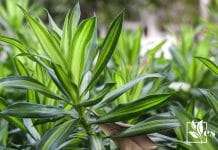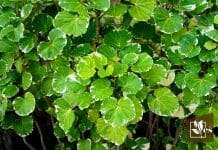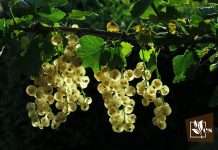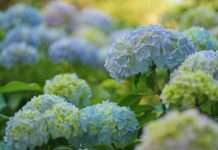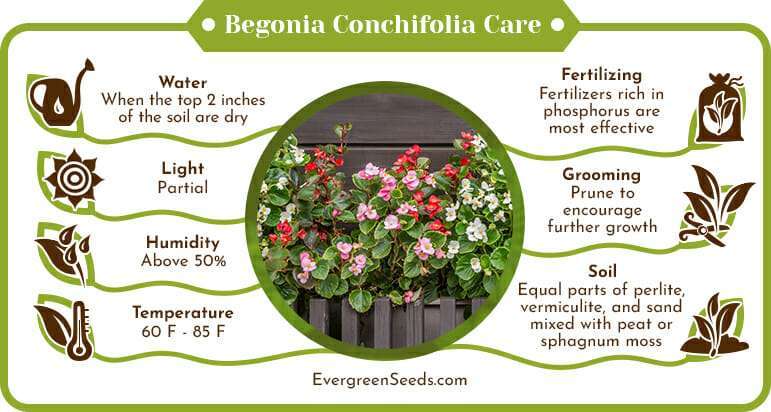
Begonia conchifolia is a great houseplant of the Begoniaceae family with its round, glossy leaves and a bright red spot in the center.
In addition, it produces the most subtle, gorgeous, and fragrant flowers during the blooming season. On top of that, they are super easy to look after! Find out some of our best tips regarding plant care for this amazing begonia genus plant.
JUMP TO TOPIC
Begonia Conchifolia Care
- Soil: Use a well-draining mix of charcoal, sphagnum, and perlite.
- Watering: Provide consistent hydration.
- Light: Provide bright, indirect sunlight
- Temperature: Maintain temperatures between 60-75°F
- Humidity: Keep high humidity, around 50-70%
- Fertilizer: Feed with a balanced orchid fertilizer every 2 weeks
- Repotting: Every 2-3 years or when the pot becomes overcrowded.
Now we will give you detailed information on how to look after a Begonia Conchifolia.
 Water Requirements
Water Requirements
Yes, your conchifolia can survive moderate conditions of drought because it stores water within its rhizomes. We strongly recommend you take good care and keep the soil evenly moist. This is especially important during the summer time because water also helps with preventing overheating of the plant’s different parts.
Instead of watering on a schedule, water according to the soil’s needs. When the mulch and topsoil feel dry, your begonia should be watered immediately. A more diligent approach would be to place a pencil within the soil to see if the top two inches have dried. Failing that you can simply do a finger test. Push your finger in the soil and check where it goes dry.
Water sparingly and slowly, taking care not to splash it all over the stems and the leaves. Even during the hotter months, never use cold water. Instead, use room temperature water only. During winter, you can use a little bit of lukewarm water.
As for the choice of water, there is nothing better than distilled water. It is the safest and purest water that will ensure your plant is not exposed to unnecessary salts and minerals. If you have no option besides tap water, at least remove chlorine from it by keeping it exposed to air overnight.
Another important aspect of watering is proper soil and pot drainage. If the soil tends to retain water, this could lead to rot, pests, and many other problems. Remember to constantly look under the pot to find out quickly if the drainage holes are blocked or not.
 Light Requirements
Light Requirements
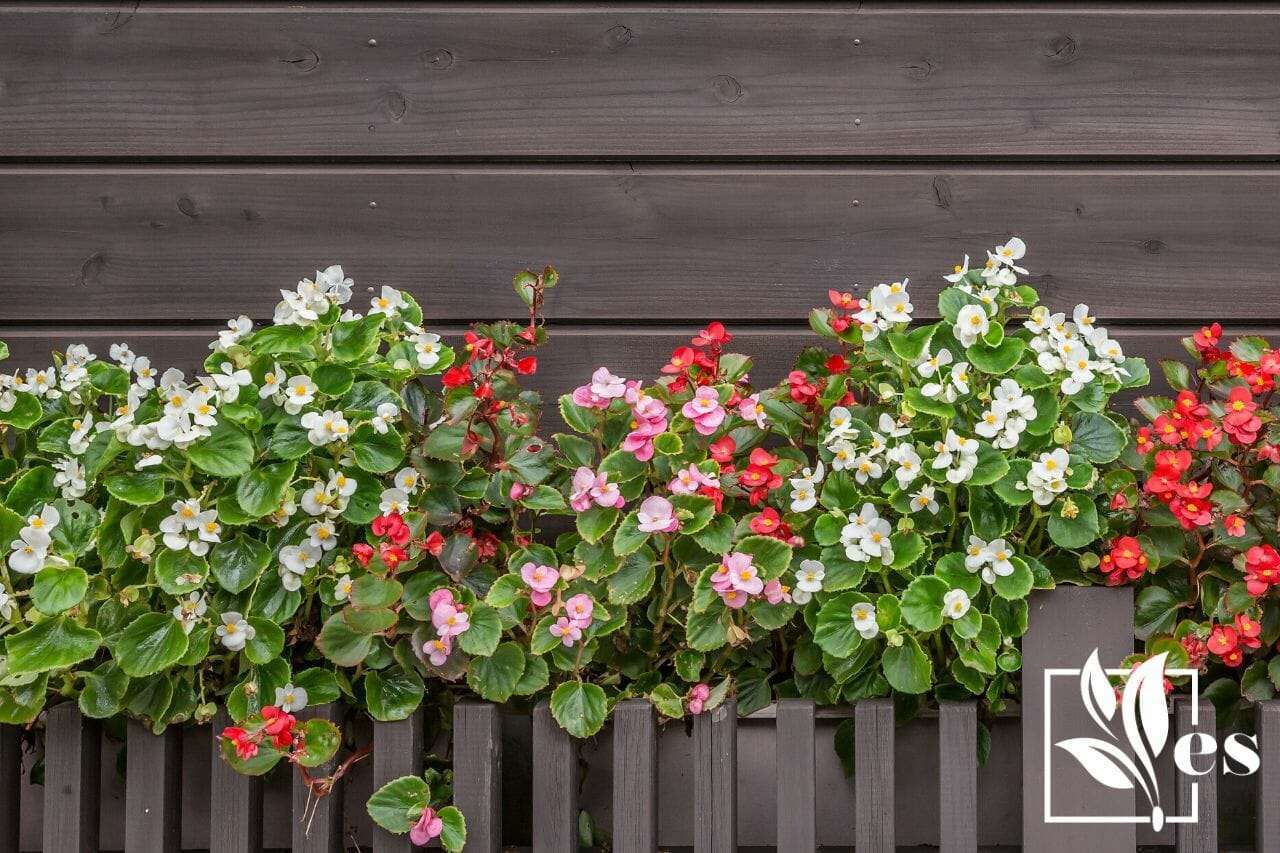 To grow properly, your plant needs seven to eight hours of dappled and partial sunlight daily. It cannot tolerate sunlight directly on its leaves, especially during the hot months of summer.
To grow properly, your plant needs seven to eight hours of dappled and partial sunlight daily. It cannot tolerate sunlight directly on its leaves, especially during the hot months of summer.
Direct sunlight will cause its leaves to get sunburnt, so we don’t recommend putting them out in the sun.
If there is a shaded spot in the garden or a spot under a larger tree, you can use it to provide shade from direct sun. Inside the house, this plant grows quite safely in a shaded environment. However, it would be best if you still had a properly-sized window for the light to shine through.
Except for the northern-facing ones, all windows receive direct light during the day. You can employ a sheer fabric curtain to lessen the impact of this light. The southern-facing window is the harshest window when it comes to light. Place your Conchifolia container 3 feet away from this window and see it magically grow .
You can safely allow your plant a few hours of direct light during wintertime. This is because the light is slightly less intense during this time of year. Put the plant near the eastern or the western window so that it can get a little bit of both warmth and light.
Don’t have access to proper windows within your indoor living space? Artificial grow lights installed a few inches away from the plant work equally effectively. The latest LED lights are quite energy-efficient and save you from large electricity bills. The only downside is that such lights need to be turned on for about 12 to 14 hours daily.
 Soil Requirements
Soil Requirements
The soil for your Begonia conchifolia var plant must be well-draining with thorough air circulation. Your roots need to get direct access to oxygen and have proper water drainage from it. For begonias, you need a growth medium that is soilless, meaning it does not contain actual soil in it.
In our experience, the ideal mix for this plant needs to be half organic matter and half inorganic matter. For organic matter, you should take peat or sphagnum moss. Moss not only acts as a moisture-retentive ingredient but also adds organic nutrients to the soil.
For the inorganic part, mix equal parts of perlite, vermiculite, and sand thoroughly with each other. These ingredients add porosity to the soil, making it more aerated and well-draining. You can then add chunks of bark and wood shavings to shake everything up properly.
After you have filled your pot with said soil, cover the top layer with mulch. Mulch helps a lot when retaining moisture in the soil for longer. The best mulch for begonia soil is, no doubt, healthy leaves that have fallen off the plant. The right pH for the soil needs to be 6.1 to 6.7. If it is a bit too alkaline, add a little bit of organic matter to bring the pH down. We suggest following all the above soil requirements if you want to report your Begonia conchifolia.
 Temperature Requirements
Temperature Requirements
The ideal temperature range for this begonia is around 60 to 85 degrees Fahrenheit. Like other begonias, such as Begonia amphioxus and Begonia dangling cherries, it needs this warm temperature all year round.
Most of you will be growing this plant indoors. In that case, you must keep it away from cold air drafts from vents, air conditioners, and open windows at night. Even short-time exposure to air drafts below 55 degrees will cause this plant to undergo growth retardation. The plant might react by shedding its leaves one by one.
It is a bit easier to maintain warm temperatures indoors during wintertime. This is because most of you will be maintaining warmer temperatures inside the house during that time. Keep its pot away from the radiator because you cannot let temperatures exceed 85 degrees.
 Humidity Requirements
Humidity Requirements
This plant needs more than 50 percent humidity all year round, especially during summertime. A hygrometer is a pretty useful instrument that will help you determine how humid the air inside your house is. If it fails below 50 percent, the leaves will appear dry and wrinkly. If that happens, you need to take steps to improve humidity.
One method is to use a pebble tray. Take any small-sized tray and fill it with clean water and pebbles. Then place this plant near the pot of your begonia or under its pot. The evaporating water from this tray will make the air more moist and much better.
You cannot mist your Conchifolia plant because it is highly susceptible to infection from fungal infections. Instead, use a slightly moist cloth to wipe the leaves of the plant once a month thoroughly. Do not do this more than once a month, though. This practice will also help eliminate any potential pests and their larvae that might otherwise go unnoticed.
If you happen to own a humidifier, then this is the easiest method so far. Make sure you invest in a good quality humidifier that comes with the option of turning off automatically when the required humidity levels are reached. Trust us – a humidifier will make your life much easier as a striving plant parent.
 Fertilizing Requirements
Fertilizing Requirements
Your Conchifolia will respond well to regular fertilizing. It would be best if you started fertilizing early on when you plant this begonia. Make sure to add ample organic manure to the soil when mixing it. Adorn the top of the soil with 1 to 2 inches of mulch.
After your plant has established itself in the soil, start a monthly feeding regimen during the growing months. This is usually from early spring to late summer. Fertilizers rich in phosphorus are the most effective as they help the most with flowering.
Before using a phosphorus-rich liquid fertilizer, do not forget to dilute it beforehand. It is as easy as mixing an equal volume of water with the feed. Pour carefully on the soil because if any of it falls on the leaves, it might cause chemical burns.
The mulch on the soil’s surface will also break down over time. This will also contribute to providing nutrients to the plant’s roots. During wintertime, the roots will do without any feeding. We encourage plant keepers to give their begonia rest during the period of non-growth in winter.
 Pruning
Pruning
Pruning is very important when it comes to keeping your begonia growing and thriving. It can encourage further growth when done properly and at the right time. Every spring before your plant starts flowering, set aside time to prune off the ends of your stems.
Preferably cut your stems at an angle of 45 degrees. Always double-check that your pruning instruments are sterilized, clean, and sharpened properly. Apart from the risk of transfer of infections, a dull blade will end up crushing the stem and causing further damage.
Do not prune off more than one to two inches off each stem. On the whole, do not prune the plant more than one-third of its current size. If you cut off too much of the plant at one time, the rest of it will have a pretty hard time surviving on its own.
Propagation
If you are interested in propagating more Conchifolia, then look no further. This plant will be easily propagated either by using rhizomes or stem and leaf cuttings. The best time to carry out propagation is early to late spring.
– Propagating Through Rhizomes
Rhizomes are the most successful means of propagating a begonia. They are underground stems that store a rich quantity of nutrients. Let us go through a step-by-step tutorial of the best method of propagating through a rhizome:
- First of all, you will need to take the parent Conchifolia out of its soil. In order not to damage the roots, be very gentle. Moisten the soil with a lot of water for a couple of hours before – easing and speeding up the process.
- Once the parent plant is out of its pot, wash its roots gently with water. Now you will be able to see the rhizomes growing underground.
- See if you can untangle these rhizomes from one another by hand alone. Each rhizome should come with its root system and stems above ground. If there is any problem separating them by hand, you can use a sharp knife to move them apart.
- Ideally, you should divide one parent plant into no more than three separate sections.
- Prepare the ideal begonia growth medium and use it to fill a small to medium-sized terracotta pot halfway.
- Place your separated rhizome in the pot and then fill the rest of it with your prepared mix. Keep this mixture evenly moist for the whole three upcoming weeks.
- Put the newly potted plants in a bright, shaded spot or under artificial grow lights. Make sure that the temperature stays between 70 to 75 degrees Fahrenheit.
- If the propagation has been successful, it should take three to four weeks for the plant to establish itself properly.
– Propagating Through Cuttings
Cuttings are our second favorite method of making more of these begonias. You can either use leaves for this purpose or go for stems instead. Both work equally well and successfully.
- For leaf cuttings, you need a healthy leaf that is not too young. Remove the leaf from the stem along with its stalk. Make a few very shallow cuts on the leaves involving the central vein with the edge of a sharp knife.
- For stem cuttings, take a four to five-inch piece of a healthy stem. This piece must have at least one to two leaf nodes. Leave only one leaf remaining and get rid of the rest.
- Dip both the cut end of the stem piece and the cuts on the leaves with rooting hormone. A rooting hormone increases the chances of successful propagation by a great deal.
- Buy a small terracotta or a clay pot and fill it with the soilless mixture as mentioned above.
- Place one-third of the cutting into the soil right in the center of the pot. The one remaining leaf on the cutting must be above the water’s surface.
- As for the leaf, place it on the soil such that the cut underside is laid flat on the soil surface. You need not bury the leaf in the soil but ensure it is at least in contact with it. Push the stalk in the soil, though.
- Give your cuttings the optimum care in indirect bright light, warm temperatures, and high humidity levels. Within two to three weeks, they will form new roots and begin to grow.
Problems
Your conchifolia begonia will not give you a lot of trouble when growing it at home. If you grow them outside, then your Begonia might have some deer visitors that can damage it. However, some of the most common problems many begonia growers face include powdery mildew, pests, blight, and sunburn due to excessive sunlight exposure. Find out how best to deal with these problems ahead.
– Powdery Mildew
If your begonia looks like it is covered with sprinkled white powder, it is most probably suffering from a powdery mildew infection. This fungal disease affects a plant that is constantly made wet during watering. It can also attack if the air circulation around the plant is poor under high humidity conditions.
Initially, mildew begins as tiny white spots on the upper side of the leaves. Over time, these spots become so many that they merge to turn the whole leaf surface white. Soon, white mold forms that can even be wiped away with tissue paper. This layer prevents the begonia leaves from getting proper sunlight.
If only one or two leaves are affected, you can just snip them off. Unfortunately, if the whole plant is affected, you have a bit more work to do. We have some DIY antifungal remedies for you. Add one teaspoon of baking soda to a quart of water. Pour this solution into a spray bottle that you then use weekly.
Another approach is to use neem oil instead of baking soda. Just add a teaspoon of this oil to one gallon of water along with a few drops of dishwashing soap. Again, add this mixture to a spray bottle. Spray your plant with it every week, and then wipe off the white mold using a paper napkin.
– Botrytis Blight
Botrytis blight is a common fungal infection among all begonia species, especially Conchifolia and Begonia red ruby.
Your plant can succumb to this problem when you use unclean instruments from another infected plant. Overwatering, overfeeding, and plants not being kept in well-ventilated places make them more susceptible.
This disease begins insidiously and destroys the entire esthetic of your plant within weeks. The flowers that develop will be malformed and brown. Some of the older flowers start turning brown. Especially in the colder period, grey or brown mold will also begin to cover the stems and the leaves.
If you feel like your plant can be saved, then pick off the leaves and stem parts that are the most severely affected. Then embark on a weekly regime of spraying with an antifungal such as copper or iron-containing ones to treat this disease.
– Leaf Burning
Your conchifolia, like sister plants begonia gardneri, is sensitive to direct sunlight. If yours has been placed under direct light for an extended period, its leaves will start getting burnt. It is very easy to spot leaves sunburnt by direct light.
They will be dehydrated and paper thin and begin to turn yellow. Any more light and these leaves will start turning brown around the edges. What you need to do is to move the plant away from direct sunlight to a more shaded spot.
The leaves that have already turned yellow or brown will not likely turn green again. You can choose to keep them if you like. Alternatively, you can remove them and use them as mulch instead. We prefer that option.
– Pests
Pests are an inevitable problem when you are growing houseplants. For begonias, you will have to deal with pests that survive by making tiny puncture marks and sucking the sap from the plant. Some of the most common among these pests are mealybugs, aphids, and spider mites. These pests make homes under the begonia leaves and grow very large in numbers.
Some of these pests, like the white and round mealybugs, are easy to spot. Others, like aphids, are tiny and very good at hiding. You can identify a pest infestation by the development of small yellow spots on the leaves. If not treated, they soon cause severe growth retardation in the plant.
Manually getting rid of these pests is the key here. Picking each pest off one by one is one method. Another method is washing the stricken plant with clean water and a bar of strong anti-insect soap. Afterward, spray the plant with a spray form of an insecticide every week for about one month.


